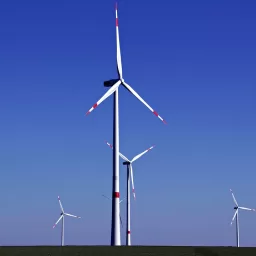Solar Energy Goes Through the Roof!
While solar farms and tax credits and fresh energy policies push their way to the solar forefront, rooftop photovoltaic systems have been lagging. Those within the solar industry may be boasting a predicted annual growth rate of 50%, but until local businesses and citizens are able to embrace solar energy over fossil fuels, the prediction may be just that.
The idea of solar farms seems somewhat contradictory in terms of providing a ‘greener’ source of energy; we’re already seeing the first fits of rushes to snag acreage for generating solar power. Isn’t one of the concepts of an eco-friendly future to re-use what you’ve already got? To get even more picky about it, the electricity generated by solar farms requires a greatly upgraded power grid in order to deliver the power from solar farms in rural areas into the cities. And the tax credits are a step in the right direction, but they still don’t make installing solar panels affordable for the average citizen. Luckily, there is a concept floating around that may assuage nit-pickers and sticklers for practicality like me: rooftop leasing for the use of photovoltaic systems which feed energy into the grid.
There are positive effects of having power drip into the main grid from many different sources rather than from a few massive sources. A 2005 study revealed that if every commercial and residential rooftop was equipped to capture solar power, 75% of the U.S.’s energy consumption would be taken care of. But how to make solar installation affordable for everyone with a rooftop? Rooftop leasing.
We’re already seeing the idea in action in California, where the city of Santa Barbara has leased out the rooftops of city-owned buildings to solar integration companies to provide enough energy to power 1,040 homes. But before you write a letter to your local statesperson, let’s look at some pros and cons of a solar energy grid based on the leased rooftop system.
Pros
- Leasing out a rooftop is worth the building- and home-owner’s while, as they receive guaranteed electricity at a cut-rate cost, little or no money down is required for installation, and it increases the land’s value
- The number of buildings that moonlight as power generators will increase in urban areas, potentially eliminating the need to traffic it in from remote areas
- Rooftop solar systems can increase the rate at which solar power is accepted globally
- Panel and installation costs will decrease rapidly
Cons
- Solar still fluctuates as a boom-then-bust industry, making nation-wide acceptance difficult
- Still-unreliable PV supplies and factors like the silicon shortage could encourage installation costs to rise and inhibit the spread of solar
- Such internal demand for solar power may take away from the U.S.’s solar market presence on a global scale
- Skilled installation workers area are still small in number, which could handicap the process of rooftop leasing to feed energy into the grid
While the pros and cons seem to outweigh one another on paper, I still think rooftop leasing is one of the best ideas for generating enough solar energy to power a country while making it affordable and maintaining solar’s green image.
photovoltaic
#Solar #Energy #Roof
Will be pleased to have you visit my pages on social networking .
Facebook page here.
Twitter account is here.
Linkedin account here
Post byBedewy for info askme VISIT GAHZLY


